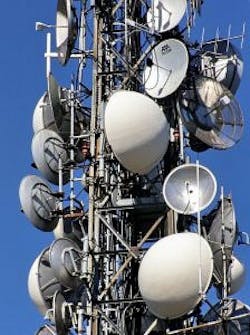Electromagnetic spectrum sharing among radar and communications systems moving forward
ARLINGTON, Va., 17 March 2015. U.S. military researchers are moving forward with a project to enable radar and communications systems to share radio frequencies in an effort to spur efficiency and alleviate congestion in the electromagnetic spectrum.
Officials of the U.S. Defense Advanced Research Projects Agency on Friday released a broad agency announcement (DARPA-BAA-15-24) for the second phase of the Shared Spectrum Access for Radar and Communications (SSPARC) project.
SSPARC phase two seeks technologies for the coexistence of RF communications and radar systems to improve radar and communications joint operational capabilities through spectrum sharing.
The second phase of the SSPARC program will build on technologies developed over the past 18 months by four companies during the program's first phase, which aimed at improving radar and communications capabilities while avoiding cross-platform interference.
The four organizations involved in SSPARC phase one are Michigan Technological University (Michigan Tech) in Houghton, Mich.; SAZE Technologies LLC in Silver Spring, Md.; the Lockheed Martin Corp. Advanced Technology Laboratories in Cherry Hill, N.J.; and Science Applications International Corp. (SAIC) in McLean, Va.
Related: Electronic warfare to be part of all military operations
Spectrum congestion is a growing problem, DARPA officials explain. It increasingly limits operational capabilities due to the increasing deployment and bandwidth of wireless communications, the use of network-centric and unmanned systems, and the need for increased flexibility in radar and communications spectrum to improve performance and overcome sophisticated countermeasures.
Radar and communications together consume most of the desirable spectrum below 6 GHz, DARPA experts say. The SSPARC program seeks to develop RF sharing technology that enables spectrum access within this desirable RF range for radar and communications systems.
DARPA will brief industry on the SSPARC phase two program from 8 a.m. to 1:30 p.m. easter time on 2 April 2015 at the ManTech Conference Center, 3865 Wilson Blvd., #800, in Arlington, Va. Register for the briefings no later than 26 March 2015 by email at [email protected].
Projects under Phase 1 of SSPARC studied two radars, the AN/SPY-1 Aegis radar and the AN/TPS-80 Ground/Air Task Oriented Radar (G/ATOR), as well as several communications systems, including the Joint Tactical Radio System (JTRS) Wideband Networking Waveform (WNW), Harris Adaptive Networking Wideband Waveform (ANW2), and Long-Term Evolution (LTE) a fourth generation commercial wireless communications standard.
Phase two projects may consider either of these radars or other S-band ground or naval-surface radars, as well as any of these communications systems or other military and commercial communications systems. The end goal of phase two coexistence projects is to develop the spectrum sharing technology to the state of a limited field demonstration.
Related: Latest contract brings to four the number of contractors for DARPA RF spectrum sharing
After SSPARC phase two is finished, DARPA officials plan to launch an 18-month third phase that will include extensive field testing with radar and communications users. Tests will assess mitigation of nuisance jamming and of problems caused by malfunctioning communications devices.
The program's second phase will support two types of spectrum sharing; spectrum sharing between military radars and military communications systems to increase both capabilities simultaneously when operating in congested and contested spectral environments; and spectrum sharing between military radars and commercial communications systems to preserve radar capability while meeting national and international needs for increased commercial communications spectrum.
Although SSPARC technology is expected to be widely applicable, the program focuses on challenges that involve S-band from 2 to 4 GHz ground or naval-surface electronically steered phased array or multifunction radar systems that combine air surveillance, air tracking, non-cooperative target identification, and weather monitoring.
The program also focuses on ground or naval-surface military RF communications systems with mobile ad-hoc network (MANET) capabilities. The SSPARC phase two program also focuses on commercial small-cell broadband communications systems.
Research will include radar beam avoidance by communications systems; and communications nodes that adjust transmit power based on measured path loss to the radar receivers.
The top-level challenge is to integrate and balance the suite of separation mechanisms so the overall system simultaneously achieves maximum performance for the systems sharing the spectrum; acceptably low interference; and acceptable cost.
DARPA experts also want to find ways to protect radar and communications systems from electronic warfare (EW) jamming and cyber attacks with techniques like minimization, encryption, obfuscation, and short-time validity of shared information.
For the SPARC program's second phase, DARPA may award several contracts. Companies interested in bidding should submit proposals no later than 27 April 2015 on the DARPA Website at https://baa.darpa.mil. Email questions or concerns to DARPA at [email protected].
More information is online at https://www.fbo.gov/spg/ODA/DARPA/CMO/DARPA-BAA-15-24/listing.html.


